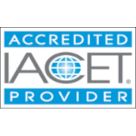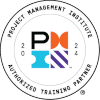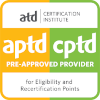Product Details
Topics Covered
- PowerPoint slideshows
- Presentation purpose
- Presentation audience
- Mapping
- Forecast, Echo, Present
- Using research
- Using templates
- Selecting images
- Choosing colors and fonts
- Design trends
- Minimalism
- Managing public speaking anxiety
- Relaxation strategies
Key Features
- Mobile-friendly
- Audio-enabled
- Badge and credit-awarding
- Fully accessible
- Games & Flashcards
- Expert-supported
- Video content
Course Preview
Course Description
Learning Outcomes
- Define effective communication
- Describe the qualities of a well-designed slideshow presentation
- Identify common problems when using PowerPoint to design slideshows
- Differentiate between effective and ineffective PowerPoint slides
- Discuss the importance of having a clear purpose or goal for your presentation
- Explain the four components of goal-oriented communication
- Consider the importance of understanding your audience
- Conduct audience analysis
- Map your presentation using the "Forecast, Present, Echo" structure
- Incorporate research into your presentation
- Assess websites for reliability and credibility
- Use slideshow templates effectively
- Select images that are professional and well-designed
- Choose visually appealing colors and fonts
- Consider how design trends can be applied to slideshows
- Define the minimalist approach to design
- Identify the signs and symptoms of speaking anxiety
- Describe methods for managing speaking anxiety, including relaxation strategies
- Design a PowerPoint presentation that features recommended design principles
Notes
This course has an "Ask the Expert" feature, which submits your questions directly to an expert in the field you are studying. Questions are answered as quickly as possible and usually within 24 hours.
As an Accredited Provider, MindEdge offers for its learning events that comply with the Continuing Education and Training Standard.
Learners must achieve an average test score of at least 70% to meet the minimum successful completion requirement and qualify to receive credit. Learners will have three attempts at all graded assessments.
Project Management Institute, , the Registered Education Provider logo, Project Management Professional, , Project Management Body of Knowledge, , Agile Certified Practitioner, -, Risk Management Professional, -, the Talent Triangle, and the Talent Triangle logo are marks of the Project Management Institute, Inc.
Information in this course has been taken from A Guide to the Project Management Body of Knowledge, (® Guide) - Sixth Edition, Project Management Institute Inc., 2017.
The following list outlines the you will earn for completing this course, based on the certifications you have.
CAPM®/PMP®/PgMP® |
|---|
| Ways of Working PDUs: 1.75 |
| Power Skills PDUs: 1.25 |
| Business Acumen PDUs: 0 |
| TOTAL: 3 |
PfMP® |
|---|
| Ways of Working PDUs: 0 |
| Power Skills PDUs: 1.25 |
| Business Acumen PDUs: 0 |
| TOTAL: 1.25 |
PMI-ACP® |
|---|
| Ways of Working PDUs: 0 |
| Power Skills PDUs: 1.25 |
| Business Acumen PDUs: 0 |
| TOTAL: 1.25 |
PMI-PBA® |
|---|
| Ways of Working PDUs: 0 |
| Power Skills PDUs: 1.25 |
| Business Acumen PDUs: 0 |
| TOTAL: 1.25 |
PMI-RMP® |
|---|
| Ways of Working PDUs: 0 |
| Power Skills PDUs: 1.25 |
| Business Acumen PDUs: 0 |
| TOTAL: 1.25 |
PMI-SP® |
|---|
| Ways of Working PDUs: 0 |
| Power Skills PDUs: 1.25 |
| Business Acumen PDUs: 0 |
| TOTAL: 1.25 |



